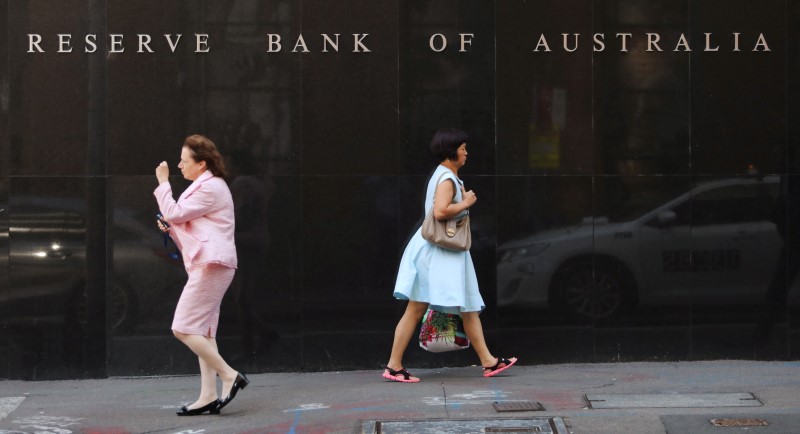(Bloomberg) -- Australia’s central bank headed into the holiday period with a pledge to reassess the economic outlook at its first meeting next year as it monitors how three prior interest-rate cuts are impacting the economy.
“The available evidence suggested that more stimulatory monetary policy had been working through the usual channels,” the board said in minutes of its Dec. 3 meeting released Tuesday. “Economic growth and the unemployment rate remained broadly consistent with the forecasts, but members agreed that it would be concerning if there were a deterioration in the outlook.”
The Reserve Bank reiterated its willingness to ease further as it tries to boost hiring and investment and reinvigorate an economy that has slowed since the middle of last year. Property prices in Sydney and Melbourne have surged since the rate cuts, but business and household confidence have responded weakly or fallen.
The RBA acknowledged the negative impact on sentiment at the meeting, when it kept the cash rate unchanged at a record-low 0.75%.
“This decline had coincided with heightened economic uncertainty globally, a period of softer growth in the Australian economy and weakness in household income growth, and the board had responded to these factors in preceding months,” the RBA said, apparently referring to the rate cuts.
Time Lags
The minutes noted that “monetary policy had long and variable lags” and that “indebted consumers may take some time” before boosting spending in response to lower mortgage payments.
The RBA also warned that at the current weak rate of wage growth, it wouldn’t be able to maintain inflation inside its 2%-3% target, nor return consumption to trend growth.
What Bloomberg’s Economists Say
“The board considers further rate cuts are possible, will work, and they will likely be needed to boost demand in an economy that’s turning gently, but not fast enough to achieve growth and inflation targets. Inflation remains a hope, not a concern, and the greater risk lies with consumer spending being too weak to sustainably achieve the RBA’s policy goals.”
James McIntyre, economist
The Australian dollar edged lower after the release and traded at 68.67 U.S. cents at 1:09 p.m. in Sydney. Traders are pricing in about a 50-50 chance of a rate cut at the February meeting, the central bank’s first of the year.
The RBA is watching closely to see whether its prior easing eventually gains traction in the economy, an issue that has been debated by economists as rates approach the effective lower bound. The government has resisted calls to provide fiscal stimulus, in contrast to nations like New Zealand and Japan that recently announced spending programs.
Lower Bound
“Members agreed that it would be important to reassess the economic outlook in February 2020, when the bank would prepare updated forecasts,” the RBA said, referring to its quarterly statement on monetary policy.
Governor Philip Lowe has estimated that 0.25% is the lower bound for rates, and the bank made clear it was prepared to deploy the two 25-basis-point cuts available before it reaches that level.
“Members noted that the board had the ability to provide further stimulus to the economy, if required,” it said. In addition to that line -- new this month --- the minutes also contained the traditional phrase that the board was prepared to ease policy further if needed.
Lowe has said he’d consider unorthodox policy if the cash rate reaches 0.25%, though he maintains that’s unlikely. The governor is betting rate and tax cuts, higher house prices, infrastructure spending and expectations of a jump in mining investment will turn the tide for the economy.
(Updates with comment from economist in eighth paragraph.)
